
The architecture consulting firm that helped design Capital One Center’s baseball stadium now has a base of its own in Tysons.
Little Diversified Architectural Consulting moved into a new office in Pinnacle Towers (1753 Pinnacle Drive) at the end of February, a spokesperson for the national company announced on Feb. 29.
Located in Suite 1100, the 7,500-square-foot space is hosting the firm’s 37 D.C.-area workers, who were previously split between offices in Arlington and Sterling.
“This move marks a significant milestone, allowing our growing team to collaborate more closely, innovate together, and better serve our clients,” Little marketing and business development manager Lillian Parker said.
Headquartered in Charlotte, North Carolina, where it was founded in 1964, Little now has more than 400 employees across five offices in the U.S., including ones in California, Florida and a second North Carolina location in Durham.
The company’s D.C. area office was located at 4245 Fairfax Drive in Arlington, but then, it acquired the Sterling-based firm Hughes Group Architects in May 2023. The new Tysons office is roughly 500 square feet smaller than the Arlington space, according to Parker.
Little provides architecture, site design, planning, marketing and engineering services. Its projects in Fairfax County have included Capital One Park, which kicked off its second season last month, and Herndon High School, according to its website.
Little’s arrival comes at an uncertain time for the office market in Tysons. A market study released last year by the Tysons Community Alliance found that foot traffic remained below pre-pandemic levels, and vacancy rates had climbed to 20% in 2023.
In mid-February, one of the area’s most prominent tenants, the media publisher Gannett, moved out of its longtime headquarters at Valo Park, announcing that it will relocate its corporate base to New York City while maintaining a D.C. news bureau for USA Today.
Though not in Tysons, another design firm — Land Design Consultants — announced last fall that it would open a second Northern Virginia office in Dunn Loring. About 20 employees were expected to move into the 4,000-square-foot space this past January.
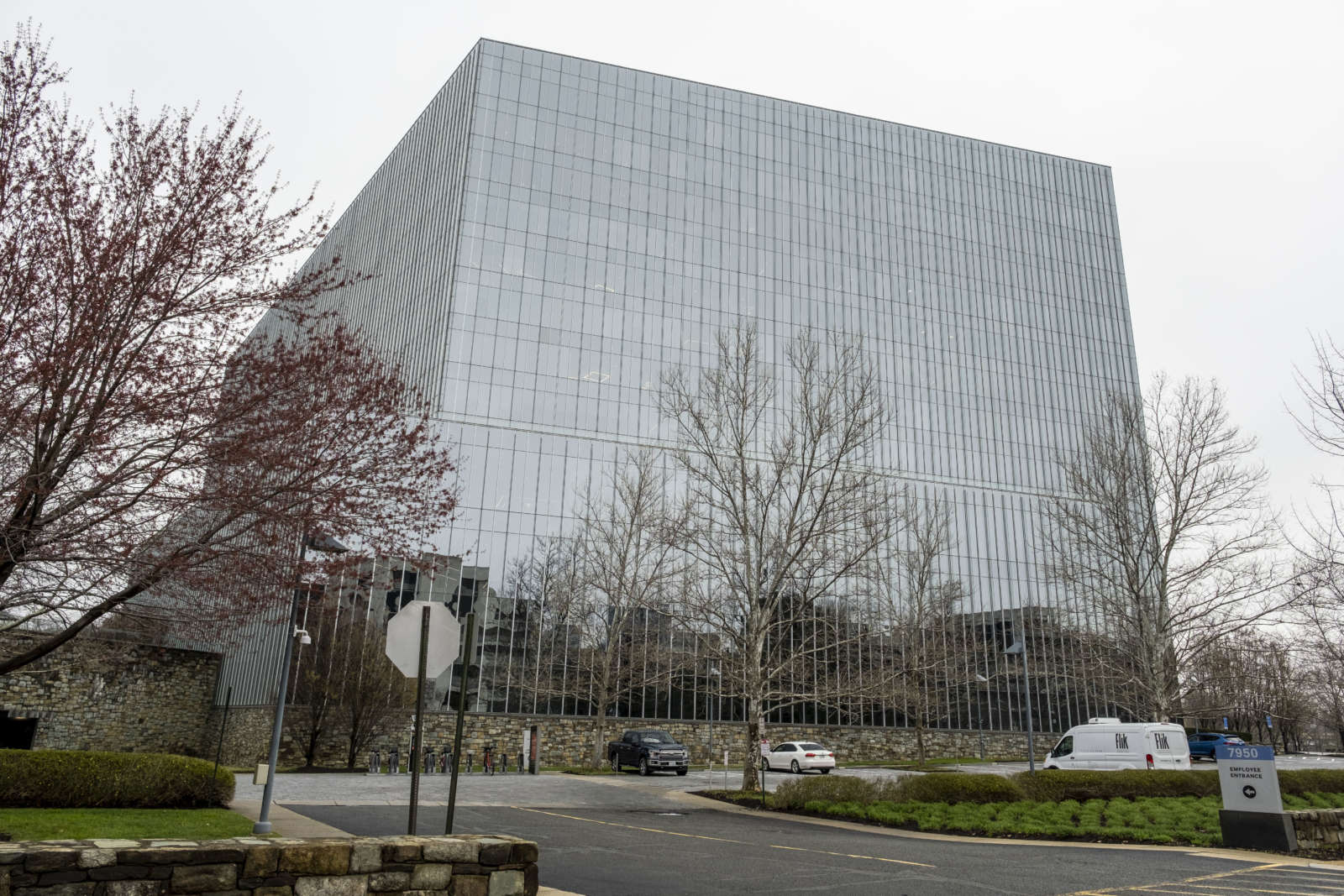
Newspaper publisher Gannett has left its longtime home in Tysons.
The media company behind USA Today and hundreds of local news outlets across the U.S. moved out of its headquarters at Valo Park (7950 Jones Branch Drive) in February, setting the stage for a relocation to New York City.
In its latest annual report to the Securities and Exchange Commission (SEC), Gannett said it has leased an approximately 24,000-square-foot space in New York City that will serve as its new corporate headquarters, starting March 31.
However, the journalists and other staff at USA Today’s now-shuttered newsroom in Tysons will work remotely or out of its existing D.C. bureau, which will be maintained, according to Gannett.
“We’re embracing our flexible working model by investing more in our people and technology — rather than real estate,” a Gannett spokesperson told FFXnow. “We remain firmly committed to the sustainable future of journalism as we adapt to a progressively digital world.”
Some USA Today workers commemorated the closure of their newsroom in social media posts. Senior reporter Mike Snider reflected on buying a home in the area when Gannett moved to Tysons, as news staff gathered to “toast the building” on Feb. 15, a day before they had to clear out the office where he’d worked for more than 22 years.
In a Jan. 27 Instagram reel, newly hired visual editor Alexa Julianaard shared a recap of her first and only week working at the building, describing the office’s emptiness as “a little bittersweet.”
“I think it’s really cool how they’re embracing remote work,” she said in the reel.
Founded in 1906, Gannett operates approximately 340 news outlets that cover 220 different communities in the U.S., along with the U.K.-based subsidiary Newsquest. Including USA Today, the company employs around 3,200 journalists, according to its SEC report.
Though Gannett is the country’s biggest newspaper publisher in terms of circulation, hundreds of unionized journalists walked out in a one-day strike last June, criticizing a 2019 merger with GateHouse Media that they said had left the company burdened in debt and created “news deserts,” the New York Times reported.
The company built its corporate headquarters at Valo Park in 2001, opening two office towers on a 30-acre campus that included a jogging path, a fitness center, athletic facilities and a helipad.
As advertising and circulation rates declined in the early 2010s, Gannett started shedding some of its office space through sub-leases, the Washington Business Journal reported in 2013. Rumors that the company was looking to sell its headquarters came to fruition in 2015, when the London-based real estate investment company agreed to buy the site for $270 million, per the WBJ.
Around that same time, Gannett split up its media publishing and digital/broadcast operations. Tegna, the spin-off company created to house the digital and broadcast operations, including the local news channel WUSA9, is still headquartered in Tysons at 8350 Broad Street in The Boro.
According to the SEC report, Gannett is still leasing approximately 176,000 square feet at Valo Park under a deal that won’t expire until October 2030. Broker CBRE lists 83,651 square feet — the entire second floor — as available for sub-leasing.
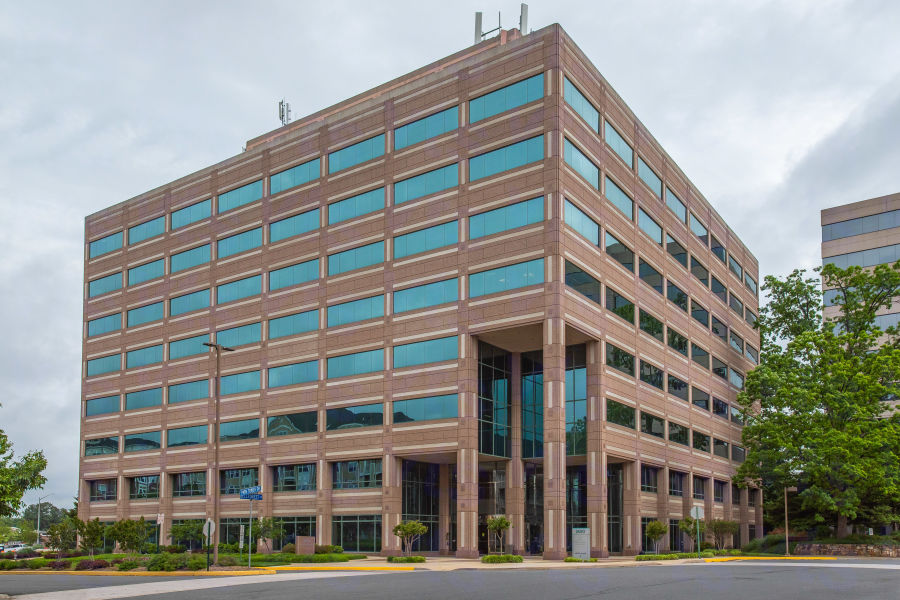
A land design and engineering firm will expand soon with a new office in Fairfax County, where it already regularly consults on development projects.
Headquartered in Woodbridge, Land Design Consultants (LDC) announced Thursday (Nov. 9) that it will open a second Northern Virginia office in Metroplace I, an 8-floor office building at 2650 Park Tower Drive near the Dunn Loring Metro station.
Intended to give the company a base closer to its clients in the D.C. area, the new, 4,000-square-foot office will focus on landscape architecture services with studio space for 20 employees, who are expected to move in this coming January, according to a press release.
“This is an exciting step forward as our company celebrates nearly 40 years offering land development engineering, planning and surveying services to our valued clients,” LDC President Matt Marshall said in the press release. “This new office will allow us to continue our mission of providing technical expertise, sustainable design and quality work that contributes to the success of our clients’ projects.”
The landscape architecture studio will be led by LDC Director of Project Managment Jessica Bradshaw, according to the firm.
Founded in 1985, LDC provides planning, civil engineering and surveying services to developers. Its Fairfax County work has included The Lofts at Reston Station, Stonebrook at Westfields, and the redevelopment of the Four Seasons Tennis Club in Merrifield into the Marche’ townhomes.
Current projects include The Flats at Tysons, a condominium development that will be built on a parking lot behind the Fairfax Square shopping center, and Workhouse Place, single-family houses currently under construction next to the Workhouse Arts Center in Lorton.
MetroPlace I has four spaces available for lease, totaling 12,875 square feet, according to property manager Lincoln Property Company.

The workers who clean office buildings around Fairfax County won’t have to hit the picket lines anytime soon.
The union representing about 9,100 commercial office cleaners in the D.C. area reached a tentative agreement yesterday (Tuesday) for a new contract with property owners in the Washington Service Contractors Association (WSCA), averting a potential strike.
Expressing frustration with wages that haven’t kept up with the rising costs of food, rent and other basic needs, union members in Fairfax and Loudoun counties voted unanimously last week to authorize a strike if an agreement wasn’t reached by the time their existing contract expires on Sunday (Oct. 15).
“These men and women proved that collective action has the power to improve jobs and lives, just like other low-wage workers deserve nationwide,” said Jaime Contreras, executive vice president of 32BJ SEIU, the Service Employees International Union’s branch for the D.C. region.
Under the proposed contract, which will go to members for ratification next week, cleaners will get hourly wage increases of $3.55 to $3.75 over four years, according to the union. Pay currently ranges from $12.50 in Loudoun and Prince George’s counties — just over Virginia’s minimum wage — to $18.60.
The union’s 3,000-plus cleaners in Fairfax County, Arlington and Alexandria, who currently earn $15 an hour, will get the $3.55 raise, set to take effect in increments every July 1 through 2027, according to WSCA negotiator Peter Chatilovicz.
The larger increase of $3.75 will go to Loudoun and Prince George’s workers to keep them above the minimum wage, which will rise to $15 on Jan. 1, 2026.
The contract also preserves existing benefits for both full-time and part-time cleaners, per 32BJ SEIU:
Under the contract, janitors maintain access to free professional training and language courses as well as legal services for concerning issues such as immigration, family and matrimonial matters, and housing law among others. Full-time cleaners in all regions will maintain employer-paid health care, including prescription drugs, dental, vision and life insurance. Part-time cleaners will continue to receive life insurance and family dental benefits.
According to the union, the agreement was reached over seven bargaining sessions that started on June 22.
While pay was the primary point of contention, the union also took issue with a proposal that would’ve reduced shifts for new employees from five to four hours long. The suggestion was taken off the table last week, as local elected officials — including almost all Fairfax County supervisors — signed pledges and appeared at rallies in support of the cleaners.
A 32BJ spokesperson confirmed that the change in shifts was not part of the tentative agreement.
“I think it was a fair agreement for both sides,” Chatilovicz said. “We managed to, I think, give some very reasonable wage increases to the employees. Benefits all stayed the same without any further costs, and like I said, I think both sides were pleased to be able to reach an agreement before we had to worry about the contract expiration.”
The contract negotiations with the WSCA came amid a frenzy of labor actions across the country. While film and TV writers recently ended a nearly five-month strike, Hollywood actors and the United Auto Workers are still on the picket lines, and health care workers for Kaiser Permanente may walk off the job again in early November after a strike from Oct. 4-7 failed to produce an agreement.
Another strike may be on the horizon for the D.C. area, this time led by office cleaners who say wages have stagnated even after they were expected to keep working through the pandemic.
About 9,100 janitors, more than 3,000 of them in Northern Virginia, are voting this week on whether to go on strike if they’re unable to agree on a new contract with the Washington Service Contractors Association (WSCA) before the existing one expires on Oct. 15.
Cleaners employed in commercial buildings across Fairfax and Loudoun counties unanimously voted on Tuesday (Oct. 3) to authorize a strike, following the lead of their colleagues in D.C., who voted a day earlier, according to 32BJ SEIU, the Service Employees International Union’s branch for the D.C. region.
Coinciding with a three-day strike by Kaiser Permanente employees that’s reportedly the largest ever by U.S. health care workers, Baltimore area cleaners were set to vote yesterday (Wednesday), followed by Montgomery County workers today and Arlington County workers tomorrow.
“No one wants to strike, but we are ready to strike if employers keep pushing cuts that cleaners can’t afford,” 32BJ SEIU Executive Vice President Jaime Contreras said.
According to the union, a core sticking point in the contract negotiations, which began in June, has been a proposed reduction in shift lengths from five to four hours for about 1,100 cleaners — a third of the Northern Virginia workforce.
The change would amount to a 20% pay cut for the affected cleaners, who would have earn $100 less per week and have less time to do the same amount of work, the union says.
Peter Chatilovicz, the WSCA’s lead negotiator, told FFXnow yesterday that proposal has been taken off the table, noting that it would’ve primarily affected D.C. workers. The goal was “to provide flexibility to bring in new workers,” not cut wages for existing ones, as commercial property owners adapt to a challenging office market, he said.
The region has lost about 1,000 office janitorial jobs in recent years, according to 32BJ SEIU. A union spokesperson confirmed the shifts proposal was “verbally” withdrawn, but as of last night, nothing has been put on the record in writing.
The cleaners and WSCA last held contract negotiations four years ago, and there’s a “tentative agreement” for the next one to be the same length, extending to October 2027, Chatilovicz says. He’s “cautiously optimistic” that a deal will be reached in time, but the two groups are still split on pay.
“That’s the big issue right now is coming up with a wage compromise so that employees who are not the highest paid employees in the area or in America get a fair wage during this time, and so that we’re able to still be competitive and deal with the issues in the industry,” Chatilovicz said. “So, it’s a typical negotiation where we’re trying to exchange proposals and come up with a compromise that management can live with and the union is satisfied with.”
Under their current contract, Fairfax County cleaners earn $15 per hour, while Loudoun cleaners get $12.50 an hour. They also receive benefits like paid vacation, holidays and sick leave, health insurance if they work full-time and access to a training, education and legal services fund, per 32BJ SEIU.
While those rates exceed Virginia’s minimum wage, albeit just barely in Loudoun County, they’re not enough to match inflated prices and soaring rents, the union argues.
Alejandria Paz, a member of the union’s bargaining team who has worked as a cleaner at 1881 Campus Commons in Reston for over a decade, says she’s already struggling to keep up with the rising costs of food, rent, transportation and other necessities.
However, she also sees the prospect of reduced hours and pay as a frustrating reflection of how little attitudes toward cleaning staff have changed, despite the heightened attention to building cleanliness and ventilation brought by COVID-19. Read More
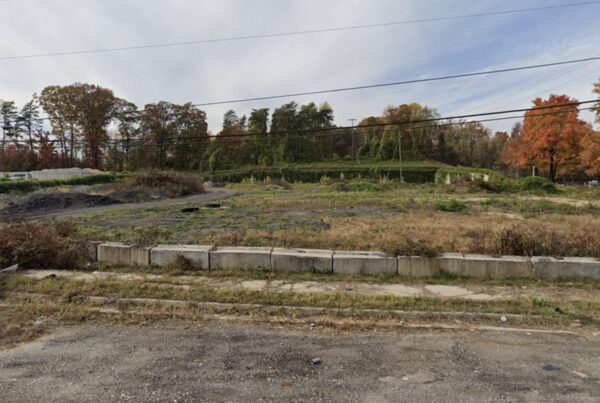
A vacant property along I-95 near Lorton Marketplace may not be vacant for much longer.
Milestone Properties is pitching either a recycling center or storage facility for the nearly three-acre site at 9420 Gunston Cove Road, which is currently home to a 75-foot retaining wall that will remain on the property.
The applicant is considering three options for the property: a recycling center, storage yard, or storage for building materials and sales purposes.
The recycling center operation would involve buying scrap metal from demolition and construction projects in the area. Metal would be consolidated and sold wholesale to users. A dozen employees would work at the site, with roughly 10 to 15 daily deliveries from contractors dropping off scrap metal.
The second option would also require up to 15 employees but would only involve the storage of construction and landscaping equipment, along with other large items. No sales of goods will occur on site, according to the application.
The final use would involve storage and sales of lumber, rock, gravel, landscaping and other materials. Sales would be allowed but not to the general public.
So far, Milestone Properties wants to phase the uses. In the first phase, a trailer with an office, two 90-foot truck scales, and outdoor storage in three locations would be provided. The plan calls for 21 parking spaces and three loading spots.
The second phase will consist of a nearly 16,000-square-foot building. The 40-foot-tall building would contain most of the storage areas.
The application is in the early phases of Fairfax County’s proposal process and has not yet been formally accepted for review.
Photo via Google Maps
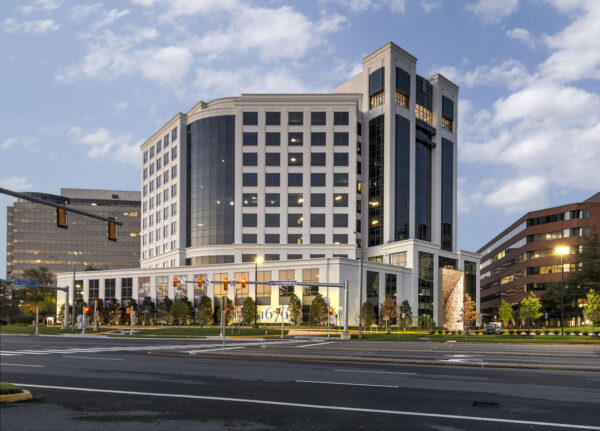
A Richmond-based commercial law firm that dates back to the post-World War II era is inching closer to Tysons Galleria.
Citing a need for more space to accommodate its growth, Hirschler officially moved its Tysons office into a 12,200-square-foot suite at 1676 International Drive just before Thanksgiving, the company announced late last month.
The new space is about 3,000 square feet larger than the firm’s previous office at 8270 Greensboro Drive, according to a spokesperson.
“We have been looking forward to this move since we began exploring this amazing space on International Drive,” said Justine Fitzgerald, managing partner of Hirschler’s Tysons office. “The enthusiasm across our Tysons team from finally inhabiting our new office is already palpable. As we continue to make ourselves at home in the upcoming weeks, we are excited about the impact that the upgraded amenities, technology and collaborative space will have for our clients.”
Hirschler said the move was needed to allow “additional space for sustained growth” of its Northern Virginia and D.C. area operations.
Founded as Hirschler and Fleischer in 1946, the company established its Tysons office in 2016 as part of a merger with the local firm Leach Travell. The office handles business, bankruptcy, real estate, and litigation cases and has now grown to 17 attorneys, the press release said.
The expansion comes as many companies opt to downsize their offices in response to the rise of remote work during the pandemic. In the third quarter of 2022, 80% of Northern Virginia’s leasing activity involved spaces smaller than 10,000 square feet, and vacancies in the region rose to 19.1%, according to an office market report by Avison Young.
In Tysons, demand remains high for “high-end” trophy office space, developers said at a “Future of Tysons” panel earlier this month. The area has added 360,000 of Class-A office space this year, behind only Crystal City in Northern Virginia, Bisnow reported.
An economic study released in March 2021 predicted that Tysons will need at least 1.9 million square feet of new office space over the next 10 years, but it also found that the pipeline for office construction exceeded projected job growth.
Given the uncertainties of the office market and Fairfax County prioritizing affordable housing, developers in the Tysons area and beyond have increasingly focused on converting or replacing commercial properties with residential or mixed-use projects.
The county is also exploring the possibility of allowing vacant commercial spaces to be used as emergency shelter for people experiencing homelessness.

With a high office and commercial vacancy rate and over 1,000 locals experiencing homelessness, Fairfax County is considering a zoning change that could use one problem to help solve the other.
The proposal would allow unused commercial spaces, including office and hotel space, to be used as emergency shelters for those experiencing homelessness.
The new zoning would let private entities — namely nonprofits that work with those experiencing homelessness — operate emergency shelters in vacant or underutilized commercial or industrial properties.
“Special exception use would permit repurposing of a commercial building in a commercial, Industrial, or in some Planned Districts with approval by the Board,” a staff report on the change said. “Commercial building includes buildings designed or used for office, hotel, retail, institutional, or industrial purposes.”
In a presentation to the Board of Supervisors housing committee on Nov. 22, staff said there is currently no “emergency shelter” use in the county zoning code.
In addition to creating an emergency shelter use, the zoning change would add a “permanent supportive housing” use for housing that provides assistance and supportive services, like transportation and training, to residents. Supportive housing is reserved in the zoning ordinance for those making below 60% of the area median income.
The presentation didn’t include information on incentives to get private property owners to open their space up for use used as emergency shelter, but board members still expressed enthusiasm for the idea.
“We’ve had similar conversations to this before, but I think we’re in a different situation right now,” said County Board Chair Jeff McKay, “not only with what we know about homelessness but that we also, unfortunately, have a higher number of vacancies because of Covid. I think it’s time to have a conversation about adaptive reuse.”
The proposed changes are part of a general push by the county to reevaluate how it tackles homelessness, particularly by increasing the availability of permanent and supportive housing instead of relying on temporary shelters.
The last point-in-time count, conducted on Jan. 26, found 1,191 people experiencing homelessness in the county, a decrease from 2021 but higher than the numbers reported in the most recent years preceding the pandemic. About 50% of the individuals counted were Black, even though only 10% of the county’s population falls in that demographic.
During the initial months of the pandemic, the county enlisted hotels as temporary shelter for individuals who were experiencing homelessness or otherwise lacked space needed for isolating or quarantining due to Covid.
Photo via Tim Mossholder/Unsplash
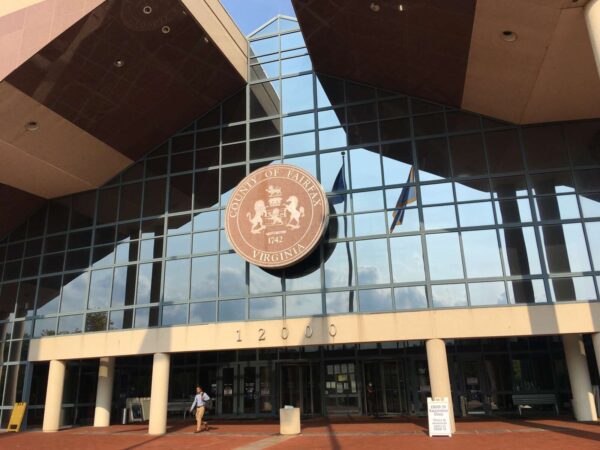
(Updated at 1:15 p.m. on 11/30/2022) Local officials are already preparing for “one of the most challenging” budget talks in years due to inflation, the changing real estate market, and staff retention challenges.
Right before the Thanksgiving holiday, Fairfax County staff offered supervisors and the school board an early look at projected revenues, expenditures, and points of potential discussion as the county and Fairfax County Public Schools (FCPS) prepare to release proposed budgets early next year.
The fiscal year 2024 budget forecast that staff presented on Nov. 22 didn’t paint a particularly rosy picture, however.
Board of Supervisors Chairman Jeff McKay called the forecast “a real mixed bag.” County staff said that generated revenue remained “healthy,” but others weren’t so sunny.
“This is probably going to be one of the most challenging budgets in my 11 years on the [school] board,” Braddock District School Board representative Megan McLaughlin said. “It’s going to be a tough one.”
Springfield District Supervisor Pat Herrity concurred, saying there wasn’t “a lot of good news in here.”
As is the case across the country, the local real estate market has been slowing due to increasing interest rates and rising prices. While it increased from last year, growth is expected to flatten going forward for the rest of 2022 and into 2023.
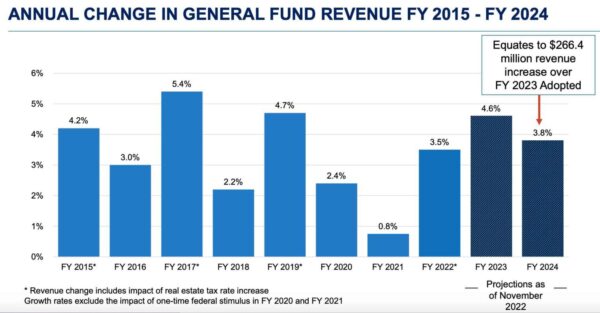
Non-residential tax revenue is in even worse shape, at least partially due to the change in work-from-home habits resulting from the pandemic. It’s expected to increase by only 0.6% compared to last year when the growth was about 2.3% compared to 2022.
While hotel, retail, and apartment revenues are all expected to increase next year, office revenue is expected to decline between 5% and 6%, raising concerns among some supervisors and school board members.
Braddock District Supervisor James Walkinshaw said he has talked to companies in the county that have no intention of renewing office leases due to decreased need with more employees now teleworking.
He called it a “slow-moving crisis” that could create a “very significant hole” in terms of missing revenue.
“[This] is very troubling,” Walkinshaw said. “It’s a structural challenge now in our economy…I’m not confident we have our arms around what that challenge is going to look like over the next 5 to 10 years.”
New construction and transient occupancy (or lodging) tax revenue are also expected to grow, but at much lower rates than prior to the pandemic.
Real estate taxes are the largest source of revenue for the county, providing more than two-thirds of generated money. Last year, home values soared, while commercial tax revenue dropped, resulting in a 3-cent decrease in the real estate tax rate.
All told, revenue is predicted to rise by about $266 million, a 3.8% increase from last year, per the presented forecast.
However, revenue isn’t keeping pace with expenditures, due mostly to anticipated staff salary increases.
Between recruitment and retention challenges and inflation, an additional $159 million will be needed for salaries and benefits compared to the current budget — plus another $113.5 million for school staff. Adding in other costs, the county and FCPS are looking at a combined shortfall of about $125 million for fiscal year 2024, which begins July 1, 2023, staff said.
Since this is a baseline forecast, a number of county and school priorities were not taken into account, including infrastructure upgrades, increased investments in affordable housing, and an expansion of early childhood education programs.
As county staff and McKay both reiterated, the forecast is only an estimation subject to change.
“As the economic outlook is uncertain, staff is approaching FY 2024 revenue forecasting very conservatively,” the presentation said.
Adoption of the fiscal year 2024 budget remains six months away. Advertised budget plans for the county and schools will be released in February with final votes coming in May 2023.

Two of Fairfax County’s longstanding JCPenney stores recently changed hands, a move that could set the stage for their malls to transition to more mixed-use environments.
Announced in September, The Meridian Group — the Bethesda-based developer behind The Boro in Tysons — partnered with D.C. real estate firm Martin-Diamond Properties to acquire five JCPenneys, including the anchor stores at Fair Oaks Mall and Springfield Town Center.
No changes are immediately expected at either store, but Meridian Senior Associate Stephen Garibaldi said in a press release that the company was drawn to the stores because they’re located in areas “ideal for mixed-use density.”
The firms spent $53 million to buy all five properties, which represent a total of nearly 900,000 square feet of retail space.
“We believe over the long-term these locations will continue to be a center of commercial activity but will see outperformance with the introduction of more mixed use,” Garibaldi told the Washington Business Journal. “While we have nothing in the works currently, if the time comes, we look forward to playing a part in that transformation in collaboration with the adjacent sites.”
JCPenney has sold or shuttered dozens of retail stores since filing for bankruptcy in May 2020. The Fair Oaks and Springfield locations were transferred to a bankruptcy trustee last year.
Both the shopping centers where the stores are located have been eyed for redevelopment for years, though neither project has advanced much beyond the planning and zoning stages.
Springfield Town Center got approved for up to 2,736 residential units and 2 million square feet of commercial development back in 2009, but a new hotel proposed this summer represented the first concrete effort to bring that plan to fruition. The application is currently scheduled to go in front of the Fairfax County Planning Commission on Nov. 30.
Previously known as Springfield Mall, the town center underwent a major renovation in 2012 where its JCPenney was one of just three stores left standing.
As for Fair Oaks, the Fairfax County Board of Supervisors amended the comprehensive plan in November 2020 to permit approximately 3.1 million square feet of development on 133 acres at the western corner of I-66 and Route 50.
Retail should go from the main use on the site to 20-25% of the total development at full buildout, with residential, office, hotel and other uses becoming more prominent, the plan says, stating that retail typically generates “a high number of vehicular trips to and from a site” and should be reduced.
The Fair Oaks redevelopment plan was enabled by a reduction in parking requirements for the county’s regional malls, but advocates have said the area’s transportation network needs more changes to make it accessible to pedestrians, bicyclists, and transit.
Meridian confirmed to FFXnow that it has “nothing in the works currently” at either Fair Oaks or Springfield Town Center.
“Numerous stakeholders have previously advanced plans re-envisioning the overall mall developments…that would introduce significant mixed-use components to augment the existing retail,” Garibaldi said in a statement. “We are excited by the opportunity to engage with the community and other stakeholders if any of these plans move forward.”

